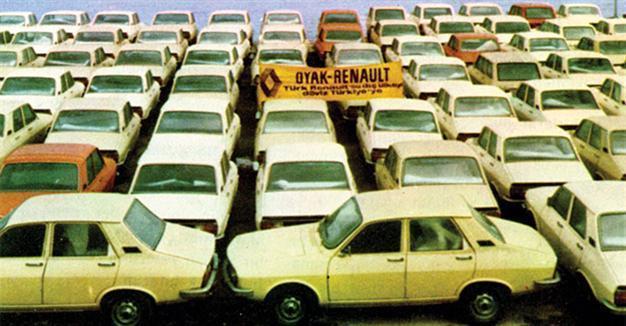Turkey’s environment of production at Salt exhibition
ISTANBUL

A new exhibition which opened on Sept. 6 at Salt Galata in Istanbul investigates the environment of production in Turkey from 1955-95 through a selection of artifacts circulating in the 1980s.
Titled “One and the Many,” the research-based exhibition looks into the production and distribution of various products. It tackles the period 1955-1995 in Turkey, by following the material results of gradual industrialization as well as its contingent infrastructural disposals.
The exhibition frames the topic primarily via the stories of selected artifacts common to the 80s, a period when industrial products met a voluminous consumer market for the first time.
Following a shift in the mid-1980s from a mixed to a liberal economy, for the first time ever producers in Turkey could trade in foreign currencies without ultimate supervision by the state. This economic novelty complemented the infrastructure of industrialization, which had been championed since the 1950s by the private sector. It allowed the state to create a plan to develop local industries with the aim of providing for foreign customers and competing internationally. The booming economy translated itself into a variety of goods, forming a visibly and materially globalized Turkey, clustered in the country’s larger cities.
Turkey’s urban centers became the key places of transition, providing simultaneously, hand and machine made, local and global brands, comfortable and provident lifestyle choices. Due to the growing accessibility of global communication networks, international influences of the time were readily present. The immediate images of abundance and prosperity soon hatched into promises of upgraded lifestyles. Although this was interpreted as offering a plurality of opportunities, it was in fact more specifically understood as an expression of dichotomies in social status. Defining studies and commentaries of the period have extensively dealt with this phenomenon.
Period’s material culture
“One and the Many” traces a timeline through the period’s material culture, setting it in relation to how it was made accessible to the public gaze. By bringing together artifacts and stories from a wide variety of industries, including automotive, white goods, furniture, toys, stationery, pret-a-porter, textiles, food and beverages, tableware, cutlery and hygiene, the exhibition informs consumers of less known narratives and allows them to add information that will expand the research. It also bridges the period’s ripple effects on cultural economy by additionally introducing less common scenes from the practices of contemporary art and fashion: moments that expose the nurturing of a particular fascination with the concept of unique products.
The exhibition and its accompanying programs are designed to provide multiple inclusive platforms for discussion on the topic. The research is continued in the form of a student workshop, where results and comments will be made available throughout the program. The audience is also invited to add their narrations on the central copy-table, which features domestic products from the period. Other public programs include talks and screenings.
“One and the Many,” which was produced with contributions from collaborating industries, professionals, consultants, academics and students who provided various ideas, content and narrations, will continue through Nov. 13.
 A new exhibition which opened on Sept. 6 at Salt Galata in Istanbul investigates the environment of production in Turkey from 1955-95 through a selection of artifacts circulating in the 1980s.
A new exhibition which opened on Sept. 6 at Salt Galata in Istanbul investigates the environment of production in Turkey from 1955-95 through a selection of artifacts circulating in the 1980s.